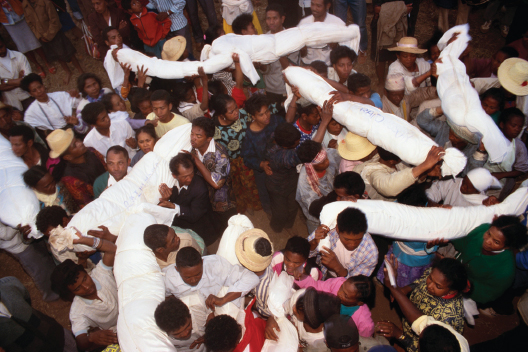Value of Emotional Expression
In Chapters 14 and 16, we discuss the importance of emotionally connecting to your audience and appealing to their emotions (pathos). However, it’s essential to understand your audience’s comfort with emotional expression. A culture that favors understatement may be suspicious of a highly dramatic speaker. You would want to ensure that your verbal and nonverbal communication is logical, credible, and competent for the context while attempting to touch their hearts.
In the central highlands of Madagascar, Rakotonarivo Henri is dancing with the bones of his grandfather. Accompanied by five brass bands, Henri and others on this island in the Indian Ocean emerge from family crypts with cheerful emotion. Amid joyful singing and dancing, they openly express their feelings to one another—
One thing that people from all cultures share is the ability to experience emotion. But expressing emotions (including which emotions under which circumstances) varies greatly. In some cultures, emotional expression is associated with strength, whereas in others it is associated with weakness. Sometimes emotional expression is seen as chaos and other times as an identification of and processing of problems (Lutz, 1996).
Many collectivistic cultures (for example, Arab cultures) often use hyperbole—vivid, colorful language with great emotional intensity (and often exaggeration). Individualistic cultures (particularly English-
We’ve seen that communication in different cultures varies along continuums in seven key ways. Yet within these broadly defined cultures, we all vary our communication in more specific ways based on the many groups to which we belong or with which we identify, as we see in the next section on group affiliation.
